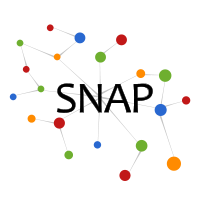Position-aware Graph Neural Networks
P-GNNs are a family of models that are provably more powerful than GNNs in capturing nodes' positional information with respect to the broader context of a graph. It can achieve superior performance in link prediction and pairwise node classification tasks.
Motivation
Learning node embeddings that capture a node’s position within the broader graph structure is crucial for many prediction tasks on graphs. However, existing Graph Neural Network (GNN) architectures have limited power in capturing the position/location of a given node with respect to all other nodes of the graph. For example, if two nodes reside in very different parts of the graph but have topologically the same (local) neighbourhood structure, they will have identical GNN structure. Therefore, GNNs will embed them to the same point in the embedding space (we ignore node attributes for now). This issue of GNNs is illustrated in the figure below.


Code
A reference implementation of P-GNNs in Python is available on GitHub.Datasets
The datasets used by P-GNNs are included in the code repository.Contributors
The following people contributed to P-GNNs:Jiaxuan You
Rex Ying
Jure Leskovec



